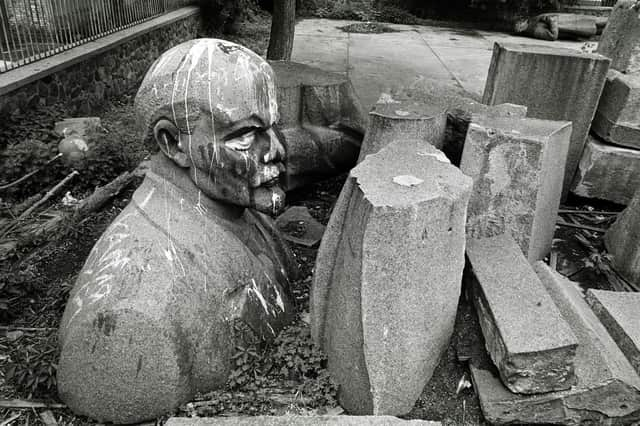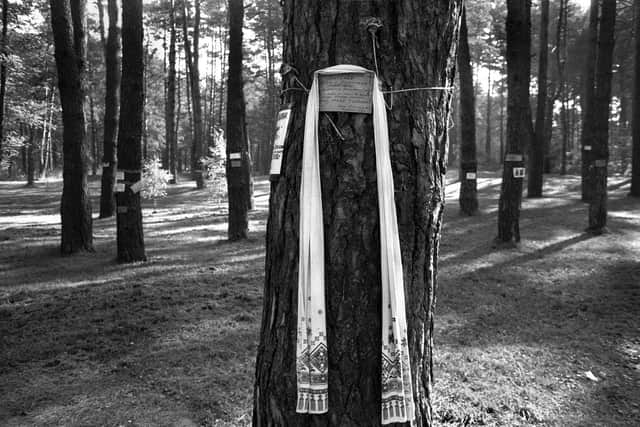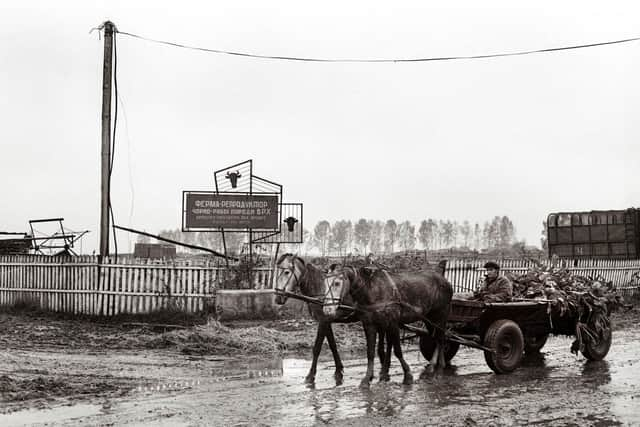Ukraine war: Bradford and Settle dates for photographer Tim Smith's talks in aid of DEC humanitarian appeal


The invasion of Ukraine has rocked the world, plunging Europe into a war witnessed from afar as countless images documenting the conflict provide horrific insight into the country’s tragic destruction.
Yorkshire’s Ukrainian Diaspora is significant and, after more than a month of fighting, the daily pictures of people in distress amid the rubble of Kyiv, Lviv, Mariupol and elsewhere will be heartbreaking for their many compatriots in places such as Bradford, Leeds, Halifax and Huddersfield.
Advertisement
Hide AdAdvertisement
Hide AdTim Smith, formerly of Bradford and now living in Settle, has documented the lives of British Ukrainians for the last 35 years and flew out to photograph the country gaining its independence from the USSR in late 1991.


He will present some of his images from that historic moment with talks at the National Science and Media Museum in Bradford at noon on Sunday and at Settle Victoria Hall at 7.30pm on Tuesday, with any proceeds going to the Disasters Emergency Committee’s Ukraine Humanitarian Appeal.
Smith, 62, says: “A lot of these photographs I’ll be showing will be like the first church services that were being held in public, or children being introduced to this new curriculum in school, or digging up these mass graves, or just somebody reading a Bible.
“You weren’t allowed to read a Bible and I remember going to a funeral, for example, of a young man who died in a motorcycle accident. Back in the day, if you wanted to do a religious funeral, you had to do it in secret at night. So a lot of the things I photographed were one of the first of them being able to express themselves religiously or speak the language at church and just talk to each other about their own experiences.”
Advertisement
Hide AdAdvertisement
Hide AdSmith’s father worked for the British government so he lived abroad for a lot of his formative years, which he says made him curious about different cultures, and moved to Bradford in 1985. “I came to Bradford because I knew it was a kind of cosmopolitan city with people from all communities that had originally come from lots of different parts of the world,” he says.


It was there that he got to know Ukrainians who found refuge in the UK and was fascinated by their stories.
“Particularly those first generation stories of living, in this case, in what was Soviet Ukraine and then being displaced by the Second World War. And then not being able to go back home because it was just too dangerous. I just thought it was extraordinary and it was quite hard to believe.”
He started to photograph the Ukrainian clubs and churches in Bradford, elsewhere in West Yorkshire and Manchester too, in the mid-1980s.
Advertisement
Hide AdAdvertisement
Hide Ad“They almost set up this kind of mini-Ukraine in exile, if you like. The schools, churches, clubs, what have you. The more I photographed it, the more intrigued I became. And I think those communities always had this dream, the first generation, of being able to return to a free and independent Ukraine, which seemed, well, kind of optimistic to say the least.
“But then in the late 80s, 1990 to 1991, the Soviet Union unravelled and free and independent Ukraine was suddenly on the table.”
Ukraine withstood political pressure from Moscow to vote overwhelmingly for independence in a referendum on December 1 1991 – more than 90 per cent of an 84 per cent turnout endorsed the move. Shortly after, the USSR was formally disbanded.
Smith’s 1991 photographs, which he thinks he took on a Canon F-1 camera, explore how Ukraine emerged from decades of Soviet totalitarian tyranny.
Advertisement
Hide AdAdvertisement
Hide AdHe says: “I think it’s the only time in my life I really feel that I’ve been at the centre of something that’s really going to change the world.
“Because whether or not Ukraine decided to become independent, in many ways, kind of decided the fate of Soviet Union.
“And it did become independent, and that was it for the he Soviet Union, it wasn’t going to survive. I think people in Ukraine kind of realised it was this pivotal moment in history for them and for Ukraine.”
In the run up to independence he and Rob Perks, an oral historian from the British Library, witnessed political debate on the streets of Kyiv and Lviv, “when one of the main platforms for the nationalists was Ukraine’s ambition to integrate with Europe,” says Smith.
Advertisement
Hide AdAdvertisement
Hide AdAs one of very few Western photographers in the country at the time, he subsequently documented the dismantling of collective farms and the statue of Vladimir Lenin in the capital’s Square of the October Revolution, since renamed Independence Square.
Amid celebrations, though, ghastly examples of Soviet terror were being revealed. Smith says: “The vivid image of that was when they were digging up all these mass graves of the victims of particularly Stalin and the Soviet secret police, the NKVD and the KGB. So I went to this forest outside Kyiv, where they reckon between 100,000 and 200,000 people are buried just in these mass graves, which is hard to comprehend. And all these stories I heard back in Bradford, I suddenly realised were no exaggeration, they were for real.”
In more rural areas, he found that many people remained frightened to speak of what they had seen and experienced, some simply terrified just to be seen in conversation with a foreigner.
Smith says: “If you haven’t lived under totalitarian rule, I think it’s really hard to imagine what that’s like. Because I remember Rob kept saying to people, ‘Why did this happen? Why did that happen?’ A couple of times people said to him, ‘If you lived in the Soviet Union you didn’t ask why’. It was because it was. Because asking ‘why’ was a kind of dangerous question, and
Advertisement
Hide AdAdvertisement
Hide AdI think that’s really hard for us in Britain to imagine, that just asking ‘why’ is a dangerous thing that could end your life or finish your career, or your family might be exiled to Siberia.”
After independence, the Ukrainian language, culture, art, literature and religion that Soviet authorities had brutally suppressed began to emerge from the underground.
“Millions of Ukrainians who were former deportees to the Soviet Gulags felt able to speak publicly for the first time. Ukraine’s forbidden history was being newly told,” says Smith.
Speaking about the current conflict, he adds: “One big worry for both British Ukrainians and certainly a huge worry for Ukrainians in Ukraine is that it’s not just the current destruction of the lives and the physical landscape.
Advertisement
Hide AdAdvertisement
Hide Ad“If the Russians do occupy parts of Ukraine or Ukraine itself, then Putin will move on to kind of attempting to obliterate Ukrainian identity and culture, too, much in the same way that Stalin tried to do.
“Part of the agenda is that you’re just not allowed to be Ukrainian. And I think that’s one of the reasons why Ukrainians have got this kind of no-surrender attitude – because they’ve got absolutely everything to lose.”